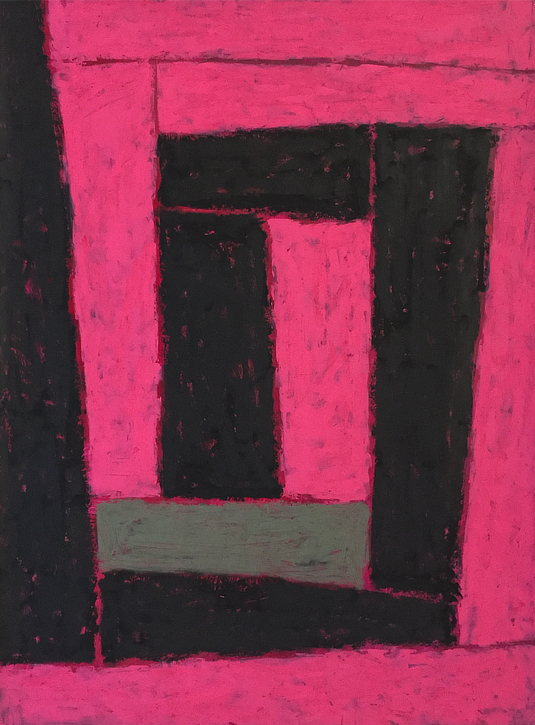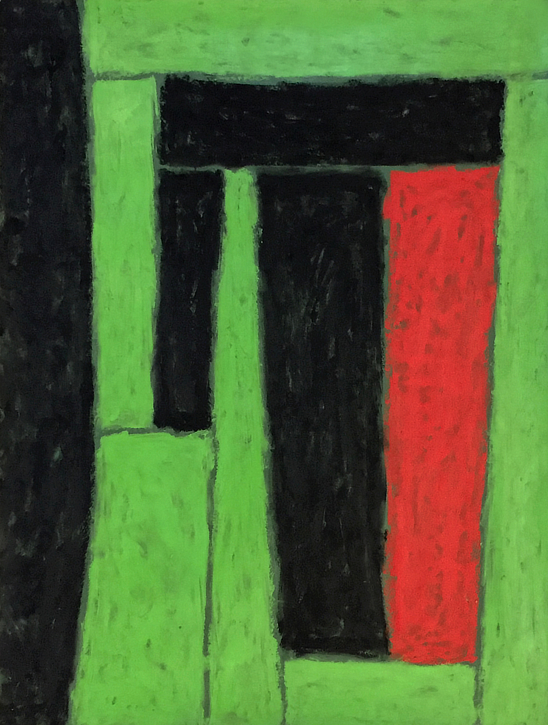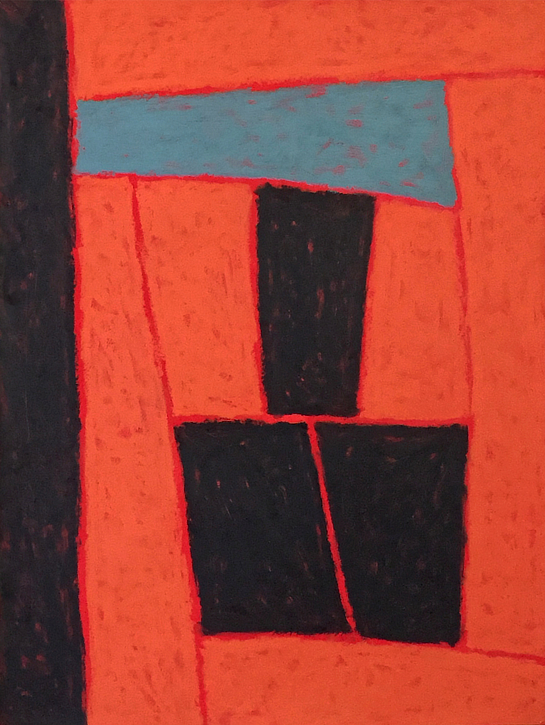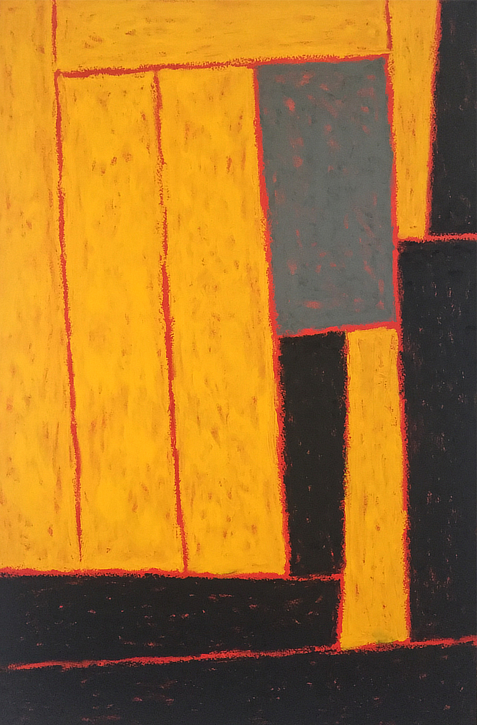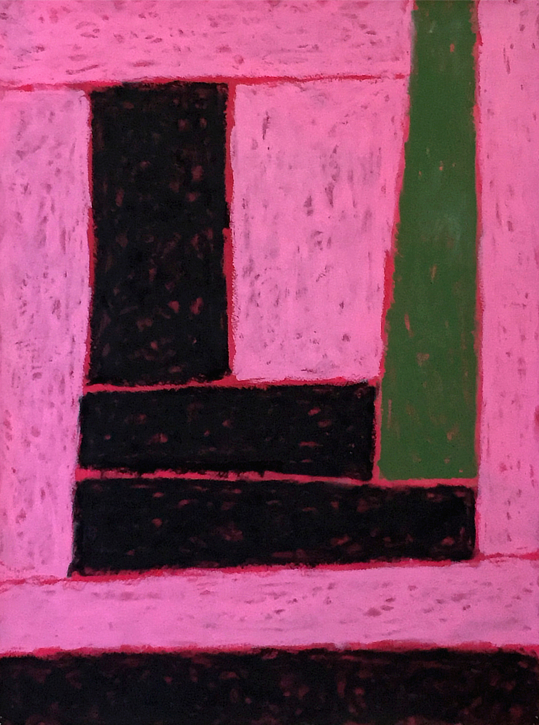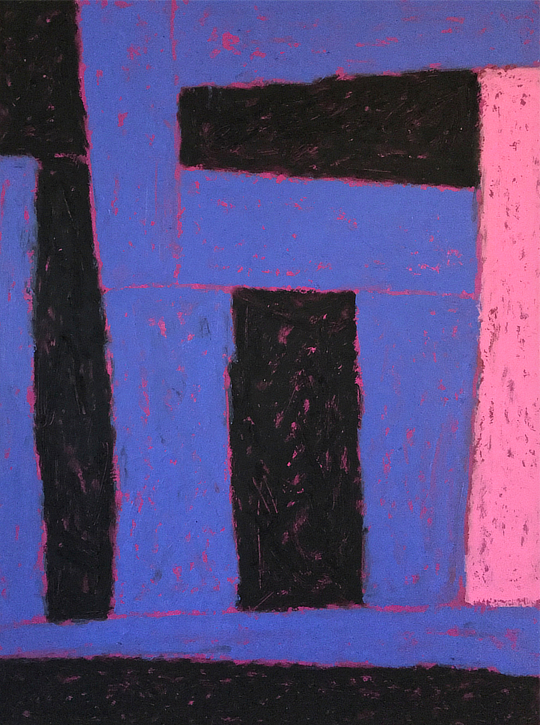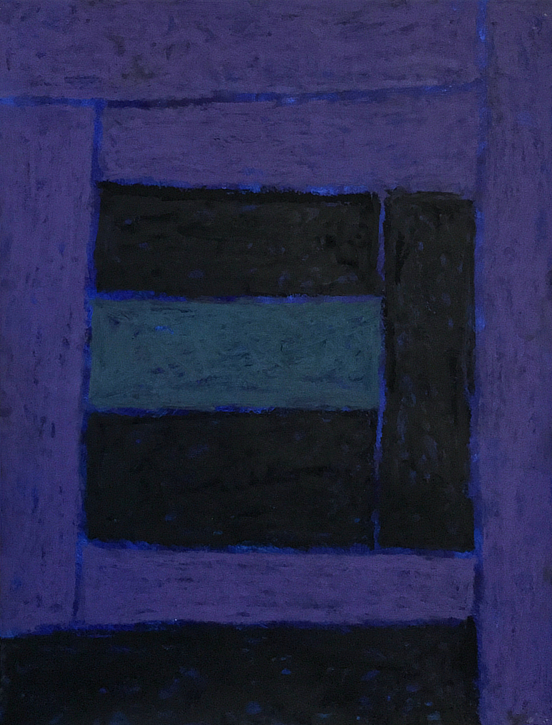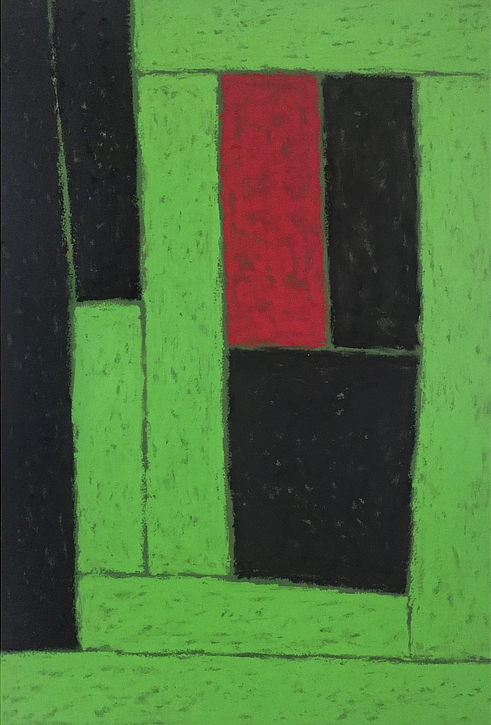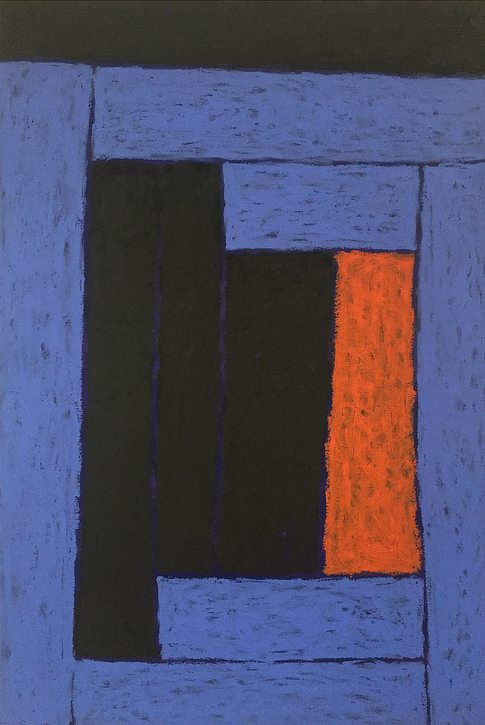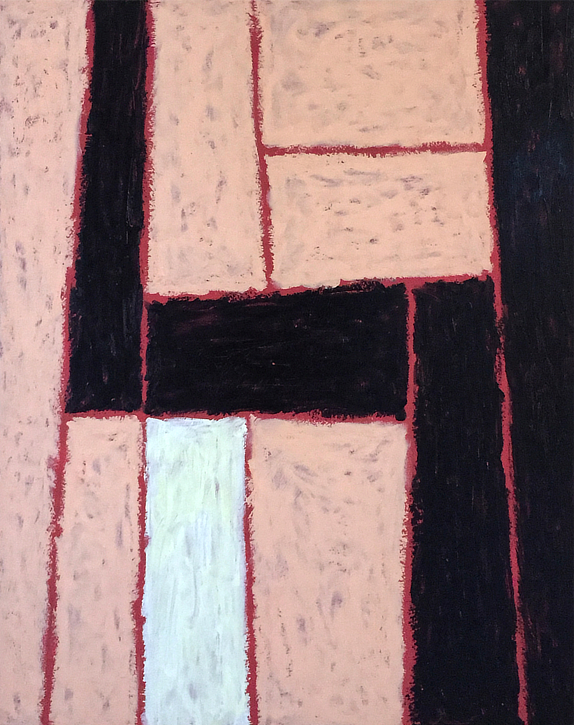Rag Time; Oil and Acrylic on paper; 18″x24”
I chose the title “Rag time” to refer to the off-beat/ syncopated arrangements of parts and shapes in the overall composition. The reference to ‘rag’ in the title of this series, reflects my admiration of mending, patching and quilting! I’ve been fascinated for some time by works such as Japanese Boro, the quilts of Gee’s Bend as well as Amish quilts. I love their calm and well balanced complexities, and feel totally in awe of the whacky, playful and improvisatory approach in some of these works. Most importantly however, I respond to the presence of the human hand reflected in all of them.
I’ve also been inspired by the color sensibility in Iranian Nomadic art. Their palette vibrates with an immediate sense of energy and life. It has also been interesting for me to observe this same color note and vitality reflected in the paintings of the German Expressionists, as well as some street art.
Among the many dictionary definitions of “abstract”, I am most inspired by the following; ‘something that concentrates in itself the essential qualities of anything more extensive, or more general, or of several things; essence.’ Everything seems to have parts, and these parts also have parts, …. and yet they all somehow work together rather seamlessly! The paintings in this series too, are composed of individual components, and are focused on bringing this concept of piece and whole to the foreground.
I see abstraction as a bridge connecting the relative and absolute. Every painting is an abstraction in the sense that it is not reality itself. A non-representational painting, is just that much more distanced from the real world! Geometry, namely line, shape, form and proportion identify the underlaying structure of everything. Vertical and horizontal are therefore the very essence of the visible.
We seem to have two methods of reduction; formal and substantial. Formal reduction would be a situation where sheer numbers are reduced, like taking away ten roses from a bundle of a dozen, and keeping only two. The substantial approach consists of distilling the entire bunch of a dozen roses into a few drops of rose essence. I wonder which one of these two approaches might be considered ‘Minimalism’, in the context of (Western) art history?
If abstraction, formally speaking, is conceived as being apart from physical/ concrete reality, then the question arises, as to whether chaos, noise and confusion should also be a part of this reality. For instance, if we think of music as abstract, or even create a new category for ‘abstract music’, then would noise also fall within that category?!
There seems to be a rather clear separation between music and noise. I am not concerned here with their value, but merely their classification. I can also find a similar distinction between poetry, and the utterance of non-sense words. However, I am curious if this type of a scenario is also present within the visual arts?!
